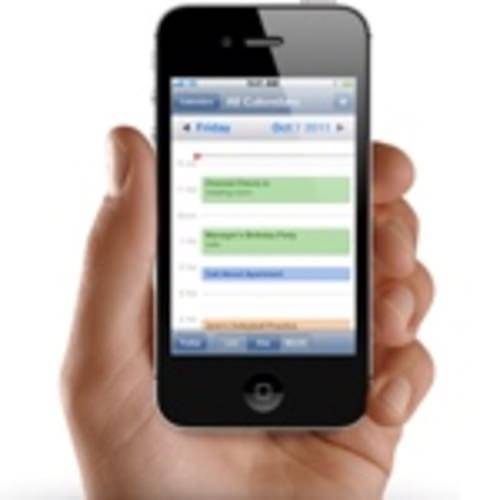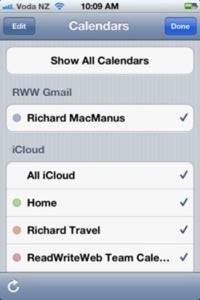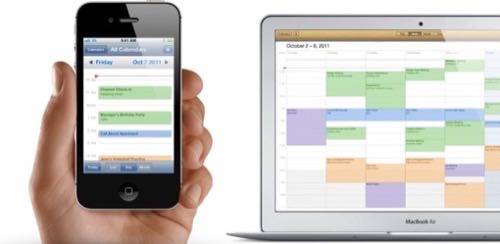Yesterday we started a new series about the Consumer Cloud, defined as an online repository for your content and applications. These services, such as Apple’s new iCloud and Amazon’s Cloud Drive, are becoming increasingly important in the multi-device world we live in.

One of the applications for which the Consumer Cloud is particularly relevant is the calendar. Unless you still carry around a paper diary, you likely use a digital calendar service such as Google Calendar, Apple iCal or Microsoft Outlook. You probably want to access your calendar while you’re out and about, for example on your smartphone or tablet. While there are many ways to sync your calendar to your various devices, they’re typically fairly technical or fiddly to set up. In this post we’ll explore how calendar sync has evolved… or has it?
Oops, Apple Hasn’t Got This Right Yet
If you use Apple’s new iCloud, you have an option to turn on calendar sync. But the user experience is less than ideal. In fact it’s downright messy.
I use Google Calendar for my personal and work lives. The first problem I experienced with iCloud is that you have to choose between iCloud and Google Calendar sync. iCloud won’t let you integrate the two. In other words, if you turn on iCloud to sync calendars – it will only sync iCal ones.

I was frankly confused by this at first, because when I had iCloud turned on to sync calendars I noticed a bunch of my old iCal calendars – that I’d long ago stopped using – show up on my iPhone and iPad (see screenshot to the right). What’s more, they began to send me notifications on those devices! I eventually figured out that iCloud calendar sync was useless for me, as I was using Google Calendar and iCloud doesn’t support it. So I turned off iCloud sync for calendars.
That meant I had to set up Google Calendar separately on each device that I own. I’d actually already done that a while ago. But the point is I thought iCloud would replace that process, so future devices would be easier to sync. It didn’t.
I wasn’t the only one to have problems with iCloud and calendars. Danny Sullivan blogged about his experiences trying to merge Outlook and Google Calendar with iCloud. Sullivan concluded that for calendaring, “iCloud isn’t solving my cross-platform issue at all.” Indeed, he felt it is “more invasive” than Google’s calendar sync.
Other Solutions
There are other ways to sync calendars. For example ReadWriteWeb webmaster Jared Smith uses ActiveSync, a Microsoft technology, to sync iCal with Google calendar.
I asked my Google+ followers which calendar they use and if/how they sync it. Most people do sync across devices, but their methods vary.
Bob Adams commented that he uses Google for his personal calendar and Microsoft Exchange at work. He said that both are “merged on my Android calendar app.”
Rob Michael’s comment is more proof that Apple hasn’t figured calendar sync out yet. “I started syncing calendars/contacts on my PalmPilot,” said Michael, “then moved to Mac iCal/ AddressBk for syncing to iPhone. Now I’ve moved everything to Google Cal and access/ sync via Android/browser cloud. I love Google’s offline functionality too. In some ways, the old Palm Pilot is my favorite for its ease of use and speed. My least favorite was the iPhone set-up.”
Lest we forget, there are other calendars out there other than by Apple, Google and Microsoft. Hubert Wagner commented that he uses Lotus Notes calendar, which he said is “available on my laptop via Lotus Notes and browser [and] Notes Traveler and browser on Android.”
Ahhh, if it were only this easy… Apple’s marketing of iCloud for calendars.

Calendar Sync Still a Work In Progress
What all of these solutions – including iCloud – have in common is that they require a bit of technical set-up. None of these calendar sync solutions is the kind of simple, painless sync that Consumer Cloud services should be providing.
Google has the best solution so far, because it’s all hosted in the cloud to begin with. Unlike Apple’s iCal or Microsoft’s Outlook. But other than on Android, which it has a large degree of control over, Google is reliant on device software from the likes of Apple and Microsoft. Apple does allow sync of Google Calendar onto its devices, but as mentioned above it’s a fiddly process and needs to be set up separately on each device.
Perhaps one day iCloud and other consumer cloud services will make it a simple, one time only process to set up calendar sync across all devices. But that day is not here yet. Let us know your thoughts on calendar sync in the comments.










